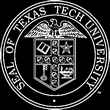| Projects |
| Sponsors: NSF, DARPA, ONR, NASA, EPRI, Boeing, Cimflex Teknowledge Inc.,FAU, IHMC, SFWMD, IBM. |
-
Classification Rule Induction from Databases
(00-present, with J. Leuchner of IHMC,
partly supported by NASA, ONR, IHMC) Develops data mining techniques and algorithms for extracting information from
structured databases. The project includes ongoing development of the SORCER(Second-Order Relation
Compression for Extraction of Rules) system. SORCER is based on our induction algorithm
referred to as table compression
-
Analysis of the COLIA1 gene mutation with machine learning (02-03, with S. D. Mooney
and T. E. Klein of Stanford Medical Informatics, partly supported by NASA, ONR, IHMC) This research aims to elucidate structural
differences of mutations associated with lethality of a genetic disease known as brittle bone disease or Osteogenesis Imperfecta
by using a machine learning approach. We are not only interested in application of existing techniques but also identification of
data mining tools/techniques to facilitate genome research.
-
Neural Net Modeling (00-01, P.I., with J. Kolen of IHMC and P. Trimble of SFWMD,
supported by SFWMD) Investigated mining of forecasting rules for lake Okeechobee inflows from history of climate global
variability using neural net and machine learning techniques including the table compression algorithm.
-
Relational Approach for Tabular Knowledge-Based Management
(96-97, P.I., with J. Leuchner, partly supported by NSF)
Developed a formal and practical framework of decision tables to be
used during data preprocessing in knowledge discovery in data bases or database queries.
Implemented R2D2, a system based on the framework for manipulating and
compressing decision tables.
-
Controlling Synthesis of Domain-Specific Object-Oriented Software
(93-97, P.I., with O. Mazuera-Gomez and J. Leuchner of FAU and M. Hewett of IBM, sponsored by NSF)
Developed a knowledge-based framework for controlling software synthesis processes to increase degree of
autonomy in software development. Produced Metamorphos, a blackboard-based framework for controlling
structured software synthesis, and MetaSort, a system using MetaMorphos for automated a Mergesort program.
-
Audio Response to POST error messages/codes
(92, CO-PI, with O. Mazuera-Gomez of FAU and Chen of IBM, sponsored by IBM )
Developed software for audio response to POST error messages integrated
in the educational system and additional technical documents.
-
An Intelligent System for Cache Memory Management
(92, with I. Mahgoub of FAU) Applied AI technique for managing cache memory intelligently to improve system
performance.
-
Computer-Aided Music Composition (91, with P. Smith of
Harid Conservatory of Music) Built a system that helps novice musicians in analyzing music and teach
music students to learn about music composition based on Counter point theory. A prototype system,
MAPLE was implemented to analyze musical primordial lines.
-
Efficient Blackboard Systems
(91-94, with M. Hewett of IBM) Introduced mechanisms to enhance performance of BB1-style blackboard
architectures.
-
Knowledge-Based Software Engineering
(92, with O.Mazuera of FAU, faculty research grant) Feasibility studies of AI application to software
synthesis, and automated software designs.
-
RCIC (90, with B. Hayes-Roth (P.I.) of Stanford U., supported by EPRI)
Applied model-based reasoning to qualitatively diagnose parts of nuclear
power plant systems. A prototype system RCIC is an intelligent diagnostic
system for Reactor Core Cooling Systems in Nuclear Power Plant.
-
An Assessment of Model-Based Technology
(90, sponsored by Cimflex Teknowledge Inc.,California)
Reported on the state of the art in Model-Based Reasoning Technology including
strategic recommendations and a forecast of future trends in this area.
-
Guardian and BBICU
(87-90, with B. Hayes-Roth (P.I.) of Stanford U.,
and A. Seiver, M.D. of the Palo Alto Veterans Admin. Hospital, sponsored
by DARPA, EPRI, and Boeing) Developed ICE, a model-based reasoning component for diagnosis, explanation
and prediction of patient conditions. ICE is a subcomponent of Guardian, a prototype
expert system for monitoring patients in a hospital intensive care unit. The objective
of the project is to design an architecture for intelligent real-time monitoring and
control.
|
|

Mailing address: Center for Excellence in Engineering Graduate Studies and Research, 302 Pine St. Abilene, TX 79601. Tel: (325) 677-1112 or
Department of Computer Science, P.O. Box 43104, Lubbock, TX 79409-3104. Tel: (806)742-3527. |
|
